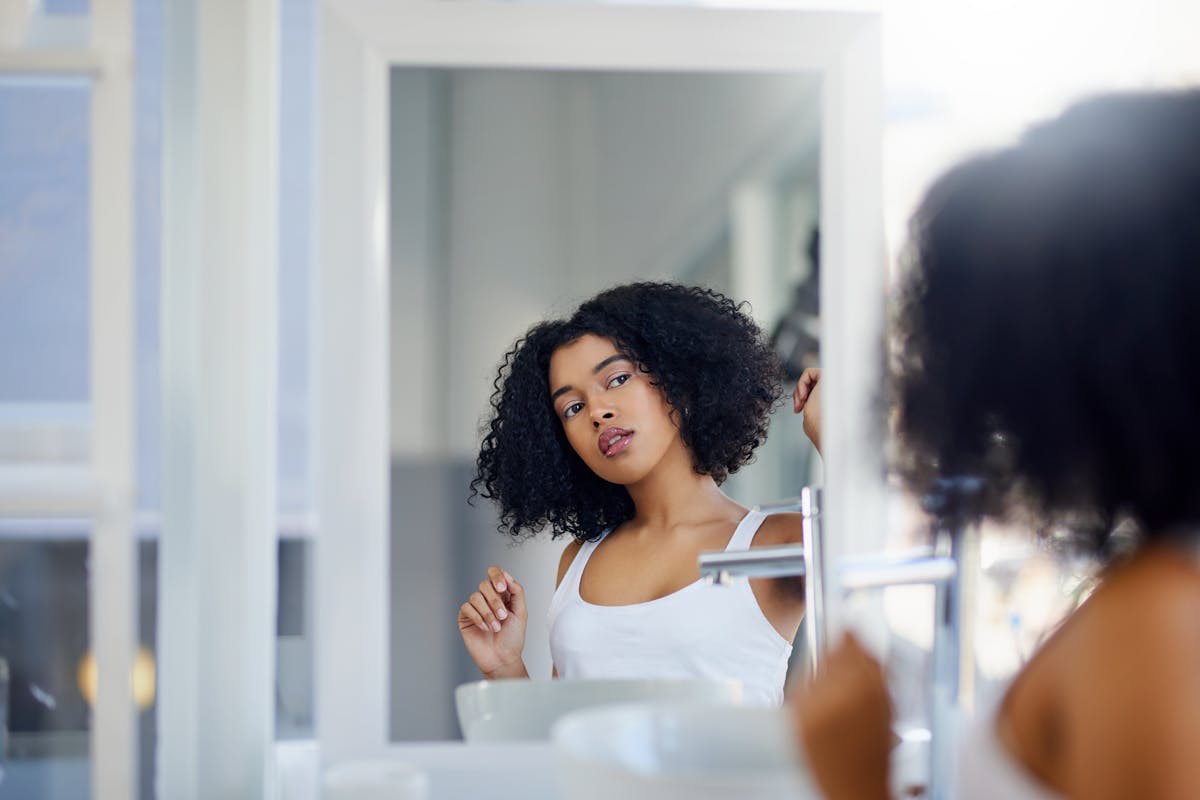Hair structure is not the same as hair texture, which is not the same as hair type — it can be confusing to keep track of all the different terms when it comes to hair health. We will help you sort out the terminology.
So Many Hair Terms — Understanding Your Hair Structure
Hair Health
8 Min Read

Get hair, health, and science news delivered right to your inbox.
Keratin – the essential building block
Every hair on your head is 90% keratin. Keratin is a protein built up by a combination of 18 different amino acids that you get through your diet. Together with collagen (the other protein that hair consists of) keratin forms the hair shaft which is the hair strand itself, as well as make up the hair root and form a protective layer around the hair follicle. Collagen works structurally as connective tissue, binding the keratin together. Each hair shaft has three layers: the medulla, the cortex, and the cuticle. This is the hair structure — how each strand of hair is built.
For many people, keratin is best well known as the substance mentioned on shampoo bottles that claim to strengthen your locks. We do not know for sure that applying keratin topically to the hair (through said shampoos) will strengthen the hair. However, it can make your hair shiny and more beautiful, so if that is your main goal, then go right ahead and use them.
What we do know is that it is important to get the right nutrients through our food in order for our hair to remain its strength. So if you do not eat a varied enough diet, or if you are too stressed to have time to eat healthy right now, or if you just want to boost your hair growth from within, a natural hair supplement may be a good idea.
The layers of your hair structure
The medulla is the inner layer of the hair and is loosely packed and disorganized. The medulla does not really do anything, but its DNA tells us from which species it comes, and from where on the body that hair would have been found.
The cortex surrounds the medulla and contains the main part of the fibrous mass that makes up a hair. This is full of keratin proteins and lipids. The cortex is what determines the strength and elasticity of your hair, and also the individual color and shape.
The outermost layer, the cuticle, is the protective layer of dead cells that you can see. The cuticle is made up of something like shingles that can open and close, letting in different amounts of moisture.
The molecular structure of hair will vary from person to person depending on their genetics. People with thin hair may not even have a medulla, while thick hair types normally have all three layers. But it can also differ on the same person, with some hairs having all three layers and some only having two.
All people have the same main structure — but it can still look different depending on your ethnicity. For example, African hair tends to have fewer layers of the protective cuticle, which makes it sensitive and prone to breaking. The layers of the cuticle are also more often raised. This lets in more moisture and causes it to get frizzy more easily. Asian hair often has cuticle layers that lie perfectly flat, which is why Asian hair tends to be more shiny and retains moisture very well. Caucasian hair can have a little bit of both and ends up somewhere in the middle.
What is hair texture and hair type?
Hair texture is different from hair structure as it decides whether you have fine, medium or thick hair. It describes the circumference of each hair strand. The third category to describe the hair is hair type. It defines if your hair is straight, wavy, curly or kinky. The hair types also have their own subcategories and may depend on your ethnicity.
If you have frizzy, dry, damaged or dull hair, there are endless home treatments you can try. For example, a homemade egg mask to boost shine and moisture, a scalp massage with an essential oil to improve hair growth, or a yoga and meditation session to reduce stress.
Your hair structure, on the other hand, is something you are born with and won’t be able to change. However, it can be good to be aware of that certain hairs tend to hold moisture and shine better than others, so if you have a hair structure which is more prone to breaking, it becomes even more important to add moisture to it and to protect it from things that will increase breakage — like too much sun, the use of hot styling tools and not drinking enough water.